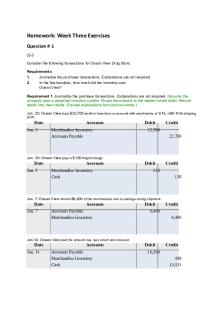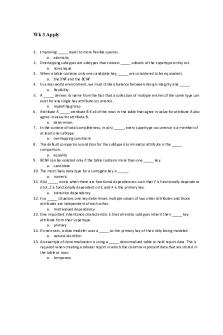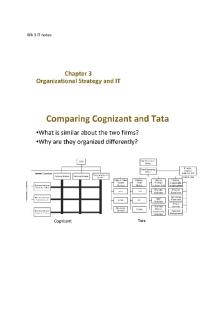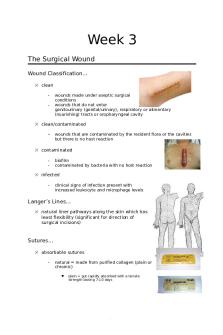WK 3 Assignment 1 - ggjg PDF

| Title | WK 3 Assignment 1 - ggjg |
|---|---|
| Author | Deepak Dohare |
| Course | Banking and Bank Finance |
| Institution | Indian Institute of Technology Roorkee |
| Pages | 29 |
| File Size | 1.4 MB |
| File Type | |
| Total Downloads | 76 |
| Total Views | 151 |
Summary
ggjg...
Description
Homework: Week Three Exercises Question # 1 S5-3 Consider the following transactions for Ocean View Drug Store: Requirements 1.
Journalize the purchase transactions. Explanations are not required.
2.
In the final analysis, how much did the inventory cost Ocean View?
Requirement 1. Journalize the purchase transactions. Explanations are not required. (Assume the company uses a perpetual inventory system. Round the answers to the nearest whole dollar. Record debits first, then credits. Exclude explanations from journal entries.) Jun. 22: Ocean View buys $22,700 worth of inventory on account with credit terms of 3/15, n/60 FOB shipping point.
Date Jun. 2
Accounts Merchandise Inventory Accounts Payable
Debit
Credit
22,700 22,700
Jun. 33: Ocean View pays a $130 freight charge.
Date Jun. 3
Accounts Merchandise Inventory Cash
Debit
Credit
130 130
Jun. 7: Ocean View returns $6,400 of the merchandise due to damage during shipment.
Date Jun. 7
Accounts Accounts Payable Merchandise Inventory
Debit
Credit
6,400 6,400
Jun.14: Ocean View paid the amount due, less return and discount.
Date Jun. 14
Accounts Accounts Payable Merchandise Inventory Cash
Debit
Credit
16,300 489 15,811
To figure: Take 22,700-6,400 = 16,300 Take 16,300*0.03 = 489 Now take 489 + 130 = 619 Now take 16,300-619 = 15,621 Now take 15,621 + 130 = 15,811
Requirement 2. In the final analysis, how much did the inventory cost Ocean View?
The inventory cost for OceanView is $
15,941 .
To solve: Take the Cash Amount of 15,811 + freight charge $130 = 15,941
Question # 2 S5-3 Consider the following transactions for Burlington Drug Store: Requirements Journalize the purchase transactions. Explanations are not required. In the final analysis, how much did the inventory cost Burlington?
1. 2.
Requirement 1. Journalize the purchase transactions. Explanations are not required. (Assume the company uses a perpetual inventory system. Round the answers to the nearest whole dollar. Record debits first, then credits. Exclude explanations from journal entries.) Jan. 2: Burlington buys $22,500 worth of inventory on account with credit terms of 2/15, n/60, FOB shipping point.
Date Jan. 2
Accounts Merchandise Inventory Accounts Payable
Debit
Credit
22,500 22,500
Jan. 4: Burlington pays a $130 freight charge.
Date Jan. 4
Accounts Merchandise Inventory Cash
Debit
Credit
130
Jan. 8: Burlington returns $6,200 of the merchandise due to damage during shipment.
130
Date Jan. 8
Accounts Accounts Payable Merchandise Inventory
Debit
Credit
6,200 6,200
Jan. 14: Burlington paid the amount due, less return and discount.
Date Jan. 14
Accounts Accounts Payable Merchandise Inventory Cash
*To Solve: Take 22,500 – 6,200 = Take 16,300 x 0.02 = Take 326 + 130 = Take 16,300 – 456 = Take 15,844 + 130 =
Debit
Credit
16,300* 326* 15,974*
16,300 326 456 15,844 15,974
Requirement 2. In the final analysis, how much did the inventory cost Burlington?
The inventory cost for Burlington is $
16,104* .
**To Solve: Take 15,974 + 130 = 16,104
Question # 3 S5-4 Journalize the following sales transactions for Paul Sportswear. Explanations are not required. The company estimates sales returns at the end of each month. (Assume the company uses a perpetual inventory system and records sales at the net amount.) Journalize the sales transactions. Explanations are not required. (Record debits first, then credits. Exclude explanations from journal entries.) Sept. 1: Paul sold $30,000 of men's sportswear for cash. Cost of goods sold is $19,000. Begin by preparing the entry to journalize the sale portion of the transaction. Do not record the expense related to the sale. We will do that in the following step.
Date Sept. 1
Accounts Cash Sales Revenue
Debit
Credit
30,000 30,000
Now journalize the expense related to the September 11 Sale —Cost of goods sold, $19,000.
Date Sept. 1
Accounts Cost of Goods Sold Merchandise Inventory
Debit
Credit
19,000 19,000
September 3: Paul sold $65,000 of women's sportswear on account, credit terms are 3/10, n/60. Cost of goods is $35,000. Begin by preparing the entry to journalize the sale portion of the transaction. Do not record the expense related to the sale. We will do that in the following step.
Date Sept. 3
Accounts Accounts Receivable Sales Revenue
Debit
Credit
63,050* 63,050*
**To Solve: Take 65,000 x 0.03 = 1,950, now take 65,000 – 1,950 = 63,050
September 5: Paul received a $3,500 sales return on damaged goods from the customer on September 11. Cost of goods damaged is $1,750. Start by preparing the entry to record the sales return and refund of cash. Do not update the Merchandise Inventory with this entry. We will do that in the following step.
Date Sept. 5
Accounts Refunds Payable Cash
Debit
Credit
3,500 3,500
Now prepare the entry to update the Merchandise Inventory account for the cost of the returned Merchandise —Cost of goods returned, $1,750.
Date Sept. 5
Accounts Merchandise Inventory Estimated Returns Inventory
Debit
Credit
1,750 1,750
September 10: Paul receives payment from the customer on the amount due, less discount.
Date Sept. 10
Accounts Cash Accounts Receivable
Debit
Credit
63,050 63,050
Question # 4 S5-4 Journalize the sales transactions. Explanations are not required. (Record debits first, then credits. Exclude explanations from journal entries.) Jun. 1: Paul sold $25,000 of men's sportswear for cash. Cost of goods sold is $11,000. Begin by preparing the entry to journalize the sale portion of the transaction. Do not record the expense related to the sale. We will do that in the following step.
Date Jun. 1
Accounts Cash Sales Revenue
Debit
Credit
25,000 25,000
Now journalize the expense related to the June 11 Sale —Cost of goods sold, $11,000.
Date Jun. 1
Accounts Cost of Goods Sold Merchandise Inventory
Debit
Credit
11,000 11,000
Jun. 3: Paul sold $68,000 of women's sportswear on account, credit terms are 1/10, n/30. Cost of goods is $35,000.
Begin by preparing the entry to journalize the sale portion of the transaction. Do not record the expense related to the sale. We will do that in the following step.
Date Jun. 3
Accounts Accounts Receivable Sales Revenue
Debit
Credit
67,320 67,320
Now journalize the expense related to the June 3 sale—Cost of goods, $35,000.
Date Jun. 3
Accounts Cost of Goods Sold Merchandise Inventory
Debit
Credit
35,000 35,000
Jun. 5: Paul received a $5,500 sales return on damaged goods from the customer on June 11. Cost of goods damaged is $2,750. Start by preparing the entry to record the sales return and refund of cash. Do not update the Merchandise Inventory with this entry. We will do that in the following step.
Date Jun. 5
Accounts Refunds Payable Cash
Debit
Credit
5,500 5,500
Now prepare the entry to update the Merchandise Inventory account for the cost of the returned Merchandise —Cost of goods returned, $2,750.
Date Jun. 5
Accounts Merchandise Inventory Estimated Returns Inventory
Debit
Credit
2,750 2,750
Jun. 10: Paul receives payment from the customer on the amount due, less discount.
Date Jun. 10
Accounts Cash Accounts Receivable
Debit
Credit
67,320 67,320
Question # 5 S5-6 Suppose Amazing.com sells 5,000 books on account for $17 each (cost of these books is $51,000) on October 10, 2018 to The Salem Store. One hundred of these books (cost $1,020) were damaged in shipment, so Amazing.com later received the damaged goods from The Salem Store as sales returns on October 13, 2018. (Assume both companies use a perpetual inventory system and that sales are recorded at the net amount.) Requirement 1. Journalize The Salem Store's October 2018 transactions. (Record debits first, then credits. Exclude explanations from journal entries.) Oct. 10: The Salem Store purchased 5,000 books on account for $17 each from Amazing.com.
Date Oct. 10
Accounts Merchandise Inventory Accounts Payable
Debit
Credit
85,000* 85,000*
**To Solve: Take 5,000 X 17 = 85,000 Oct. 13: The Salem Store returned one hundred books damaged in shipment.
Date Oct. 13
Accounts Accounts Payable Merchandise Inventory
Debit
Credit
1,700* 1,700*
**To Solve: Take 100 x 17 = 1,700 Requirement 2. Journalize Amazing.com's October 2018 transactions. The company estimates sales returns at the end of each month. (Record debits first, then credits. Exclude explanations from journal entries.) Oct. 10: The sale of 5,000 books on account for $17 each (cost of these books is $51,000) to The Salem Store. Begin by preparing the entry to journalize the sale portion of the transaction. Do not record the expense related to the sale. We will do that in the following step.
Date Oct. 10
Accounts Accounts Receivable Sales Revenue
Debit
Credit
85,000 85,000
Now journalize the expense related to the October 10 sale.
Date Oct. 10
Accounts Cost of Goods Sold Merchandise Inventory
Debit
Credit
51,000 51,000
Oct.13: The Salem Store returned one hundred books (cost $1,020) damaged in shipment. Start by preparing the entry to record the sales return. Do not update the Merchandise Inventory with this entry. We will do that in the following step.
Date Oct. 13
Accounts Refunds Payable Accounts Receivable
Debit
Credit
1,700 1,700
Now prepare the entry to update the Merchandise Inventory account for the cost of the returned merchandise.
Date Oct. 13
Accounts Merchandise Inventory Estimated Returns Inventory
Debit
Credit
1,020 1,020
Question # 6 S5-6 Suppose Amazing.com sells 2,000 books on account for $19 each (cost of these books is $22,800) on October 10, 2018 to Express Learning. One hundred of these books (cost $1,140) were damaged in shipment, so Amazing.com later received the damaged goods from Express Learning as sales returns on October 13, 2018. (Assume both companies use a perpetual inventory system and that sales are recorded at the net amount.) Requirement 1. Journalize Express Learning's October 2018 transactions. (Record debits first, then credits. Exclude explanations from journal entries.) Oct. 10: Express Learning purchased 2,000 books on account for $19 each from Amazing.com.
Date Oct. 10
Accounts Merchandise Inventory Accounts Payable
Debit
Credit
38,000* 38,000*
**To Solve: 2000 x 19 = 38,000
Oct. 13: Express Learning returned one hundred books damaged in shipment.
Date Oct. 13
Accounts Accounts Payable Merchandise Inventory
Debit
Credit
1,900 1,900
** To Solve: 100 x 19 = 1,900
Requirement 2. Journalize Amazing.com's October 2018 transactions. The company estimates sales returns at the end of each month. (Record debits first, then credits. Exclude explanations from journal entries.) Oct. 10: The sale of 2,000 books on account for $19 each (cost of these books is $22,800) to Express Learning. Begin by preparing the entry to journalize the sale portion of the transaction. Do not record the expense related to the sale. We will do that in the following step.
Date Oct. 10
Accounts Accounts Receivable Sales Revenue
Debit
Credit
38,000 38,000
Now journalize the expense related to the October 10 sale.
Date Oct. 10
Accounts Cost of Goods Sold Merchandise Inventory
Debit
Credit
22,800 22,800
Oct. 13: Express Learning returned one hundred books (cost $1,140) damaged in shipment. Start by preparing the entry to record the sales return. Do not update the Merchandise Inventory with this entry. We will do that in the following step.
Date Oct. 13
Accounts Refunds Payable Accounts Receivable
Debit
Credit
1,900 1,900
Now prepare the entry to update the Merchandise Inventory account for the cost of the returned merchandise.
Date Oct. 13
Accounts
Debit
Merchandise Inventory Estimated Returns Inventory
Credit
1,140 1,140
Question # 7 S5-9 Data Table Cost of Goods Sold Accounts Payable Rent Expense Building Rockwall, Capital Merchandise Inventory Notes Receivable
$380,00 0 20,000 21,000 116,000 212,000 257,000 31,000
Accumulated Depreciation-Building Cash Sales Revenue Depreciation Expense-Building Rockwall, Withdrawals Interest Revenue
$48,000 45,000 705,000 16,000 55,000 6,000
Requirements 1. Journalize the required closing entries for Rockwall. 2. Determine the ending balance in the capital account.
Requirement 1. Journalize the required closing entries for Rockwall. (Record debits first, then credits. Select the explanation on the last line of the journal entry table.) Start by closing the revenue accounts for the period. Do not close expenses; we will do this in the next step. Start by closing the revenue accounts for the period. Do not close expenses; we will do this in the next step.
Date Dec. 31
Accounts and Explanation Interest Revenue Sales Revenue Income Summary To close revenue accounts.
Close expenses for the period.
Debit
Credit
6,000 705,000 711,000
Date Dec. 31
Accounts and Explanation Income Summary Rent Expense Depreciation Expense—Building Cost of Goods Sold
Debit
Credit
417,000 21,000 16,000 380,000
To close expense accounts. Close Income Summary.
Date Dec. 31
Accounts and Explanation Income Summary Rockwall, Capital
Debit
Credit
294,000** 294,000**
To close Income Summary. ** To Solve: Take Closing Revenues Income Summary of 711,000 – Expense Income Summary 417,000 = 294,000 Close Withdrawals.
Date Dec. 31
Accounts and Explanation Rockwall, Capital Rockwall, Withdrawals
Debit
Credit
55,000 55,000
To close withdrawals. Requirement 2. Determine the ending balance in the Rockwall, Capital account.
The capital balance at December 31, 2018 is $
451,000**
**To Solve: Take Beginning Capital 212,000 + Income Summary 294,000 = 506,000 now take 506,000 – Closing Withdraws of 55,000 = 451,000
Question # 8 S5-10 Communications reported the following figures from its adjusted trial balance for its first year of business, which ended on July 31, 2018:
Cash Selling Expenses Accounts Payable
$4,000 1,600 5,400
Carmen, Capital Notes Payable, longterm Merchandise Inventory Administrative Expenses
5,055 1,300 700
Cost of Goods Sold Equipment, net Accrued Liabilities Net Sales Revenue Accounts Receivable Interest Expense
$18,600 11,000 1,300 29,800 3,700 55
3,200
Prepare Carmen Communications's multi-step income statement for the year ended July 31, 2018. (Use a minus sign or parentheses to show other expenses.)
Carmen Communications Income Statement Year Ended July 31, 2018 Net Sales Revenue Cost of Goods Sold Gross Profit Operating Expenses: Selling Expenses Administrative Expenses
$29,800 18,600 11,200 $1,600 3,200 4,800
Total Operating Expenses Operating Income Other Income and (Expenses): Interest Expense
6,400 (55)
Total Other Income and (Expenses) Net Income (Loss)
(55) $6,345
To Solve Operating Income: Take Gross Profit 11,200 – Total Operating Expenses 4,800 = 6,400 To solve Net Income: Take Operating Income 6,400 – Total other expenses 55 = 6,345
Question # 9 S5-11 Carrie Communications reported the following figures from its adjusted trial balance and from its multistep income statement for its first year of business, which ended on July 31, 2018:
Cash Selling Expenses Accounts Payable Carrie, Capital Notes Payable, longterm Merchandise Inventory Administrative Expenses
Cost of Goods Sold Equipment, net Accrued Liabilities Net Sales Revenue Accounts Receivable Interest Expense
$4,200 1,500 4,200 5,735 400 1,300
$19,500 8,600 1,700 29,400 3,100 35
3,200
Carrie Communications Income Statement Year Ended July 31, 2018 Net Sales Revenue Cost of Goods Sold Gross Profit Operating Expenses: $1,50 Selling Expenses 0 Administrative Expenses 3,200 Total Operating Expenses Operating Income Other Income and (Expenses) Interest Expense -35 Total Other Income and (Expenses) Net Income (Loss)
$29,40 0 19,500 9,900
4,700 5,200
-35 $5,165
Requirement 1. Prepare Carrie Communications's statement of owner's equity for the year ended July 31, 2018. Assume that there were no contributions or withdrawals during the year. (Enter a "0" for any zero balances. Include only applicable transactions during the period.)
Carrie Communications Statement of Owner's Equity Year Ended July 31, 2018 Carrie, Capital, August 1, 2017 Net income for the year
$5,735 5,165
$10,900
Carrie, Capital, July 31, 2018
Requirement 2. Prepare Carrie Communications's classified balance sheet at July 31, 2018. Use the report format. Begin by completing the assets section, then complete the liabilities and owner's equity sections. (If a box is not used in the balance sheet, leave the box empty; do not select a label or enter a zero.)
Carrie Communications Balance Sheet July 31, 2018 Assets Current Assets: Cash Accounts Receivable Merchandise Inventory
$4,200 3,100 1,300
Total Current Assets Property, Plant, and Equipment:
$8,600 8,600
Equipment, net
8,600
Total Property, Plant, and Equipment
$17,200
Total Assets Liabilities Current Liabilities: Accounts Payable Accr...
Similar Free PDFs

WK 3 Assignment 1 - ggjg
- 29 Pages

WK 3 - wk 3 summary
- 5 Pages

Wk5Assgn - wk 5 assignment
- 5 Pages

WK. 4 Assignment
- 6 Pages

Participation Assignment - Wk 9
- 4 Pages

WK. 4 Assignment
- 7 Pages

Wk 3 Apply - Assingment
- 3 Pages

Zeitstrahl - 1. WK bis 2. WK
- 1 Pages

Latte Form Wk 1
- 2 Pages

Wk 1 Economics Lecture
- 1 Pages

Wk 3 notes MBA 610
- 13 Pages

Wound Care Notes Wk 3
- 14 Pages

Summary WEEK 1 - wk 1
- 6 Pages
Popular Institutions
- Tinajero National High School - Annex
- Politeknik Caltex Riau
- Yokohama City University
- SGT University
- University of Al-Qadisiyah
- Divine Word College of Vigan
- Techniek College Rotterdam
- Universidade de Santiago
- Universiti Teknologi MARA Cawangan Johor Kampus Pasir Gudang
- Poltekkes Kemenkes Yogyakarta
- Baguio City National High School
- Colegio san marcos
- preparatoria uno
- Centro de Bachillerato Tecnológico Industrial y de Servicios No. 107
- Dalian Maritime University
- Quang Trung Secondary School
- Colegio Tecnológico en Informática
- Corporación Regional de Educación Superior
- Grupo CEDVA
- Dar Al Uloom University
- Centro de Estudios Preuniversitarios de la Universidad Nacional de Ingeniería
- 上智大学
- Aakash International School, Nuna Majara
- San Felipe Neri Catholic School
- Kang Chiao International School - New Taipei City
- Misamis Occidental National High School
- Institución Educativa Escuela Normal Juan Ladrilleros
- Kolehiyo ng Pantukan
- Batanes State College
- Instituto Continental
- Sekolah Menengah Kejuruan Kesehatan Kaltara (Tarakan)
- Colegio de La Inmaculada Concepcion - Cebu


